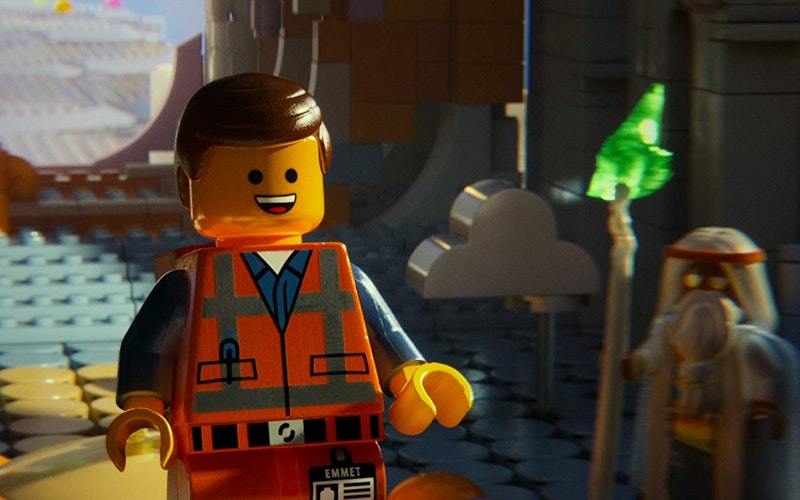
Movies
Mess With My Stuff! The Communal Lesson of The Lego Movie
How do you play with your Legos? Um, I mean, how did you play with your Legos? (Because surely adults no longer mess around with such things.) According to The Lego Movie - a fantastic family comedy that’s as much artistic expression as it is product placement - how a person goes about constructing toy blocks can reveal a lot about how they view the world.
To be clear, The Lego Movie is a clever, computer-animated kids’ flick first and foremost, starting with its straightforward story. The film opens in a meticulously ordered Lego city, where a construction worker named Emmet (voiced by Chris Pratt of television’s Parks and Recreation) wakes up every day and follows a printed list of instructions. So does everyone in the city – they buy the same (overpriced) coffee, construct blandly rectangular buildings, watch a single, insipid TV show and join in singing an omnipresent, incessant pop song with the brainwashing title of “Everything Is Awesome!” (One of the film’s ingeniously diabolical touches is that this song will get stuck in your own head.)
Who runs all of this? An obsessive-compulsive overlord with the ominous title of President Business (Will Ferrell). All is fine – and ordered – in President Business’ world until the arrival of WyldStyle (Elizabeth Banks), a mysterious loner with unauthorized streaks of color in her hair. After meeting Emmet, WyldStyle reveals that she’s part of an underground rebellion trying to bring individuality, spontaneity and creativity back into the Lego universe.
How a person goes about constructing toy blocks can reveal a lot about how they view the world.
Don’t feel too bad if you somewhat side with President Business. He is, after all, just the extreme version of the kid (or adult) who follows the instructions right down to the last brick, freaking out if pieces from another set even come near. We can’t all be the type that dumps a bucket of random Legos on the floor and comes up with something inspired. In fact, what’s great about The Lego Movie – aside from its endless stream of jokes, including an Abraham Lincoln figure who buzzes around in a space chair – is that it isn’t simply a rant against oppressive order. The movie is equally suspicious of the sort of chaos unbridled individualism can bring.
On their adventure, Emmet and WyldStyle stop in a place called Cloud Cuckoo Land, where hodgepodge figures like Unikitty (a cat with a unicorn horn) and the aforementioned Lincoln reside in a state of disarray. The problem isn’t that these characters are disordered, but that they all exist in tension or conflict with each other. In Cloud Cuckoo Land, we see individual autonomy run amok – it’s relativism in the shape of plastic blocks.
If you watch carefully, you’ll notice that The Lego Movie gently argues for something in the middle – something between suffocating conformity and individualistic anarchy. Call it creative community. There are many dazzling escape sequences in the film, as Emmet and friends are pursued by President Business’ henchmen, and during one of these our heroes must quickly construct a submarine. As they work in furious bursts, each character’s contribution has its own unique spark (Emmet builds a double-decker couch). The key, however, is that they’re all working toward a common good.
Is it possible to apply this concept of creative community to our understanding of Christian community, especially as it applies to the church? The early gatherings described in the book of Acts have gone on to spawn Amish enclaves, Roman Catholic parishes, American megachurches and countless other variations. Are some of these too ordered? Too rootless? Should the church be aiming for that sweet spot – creative community – or might that hold its own dangers? And most importantly, which character was your favorite in The Lego Movie?
Topics: Movies